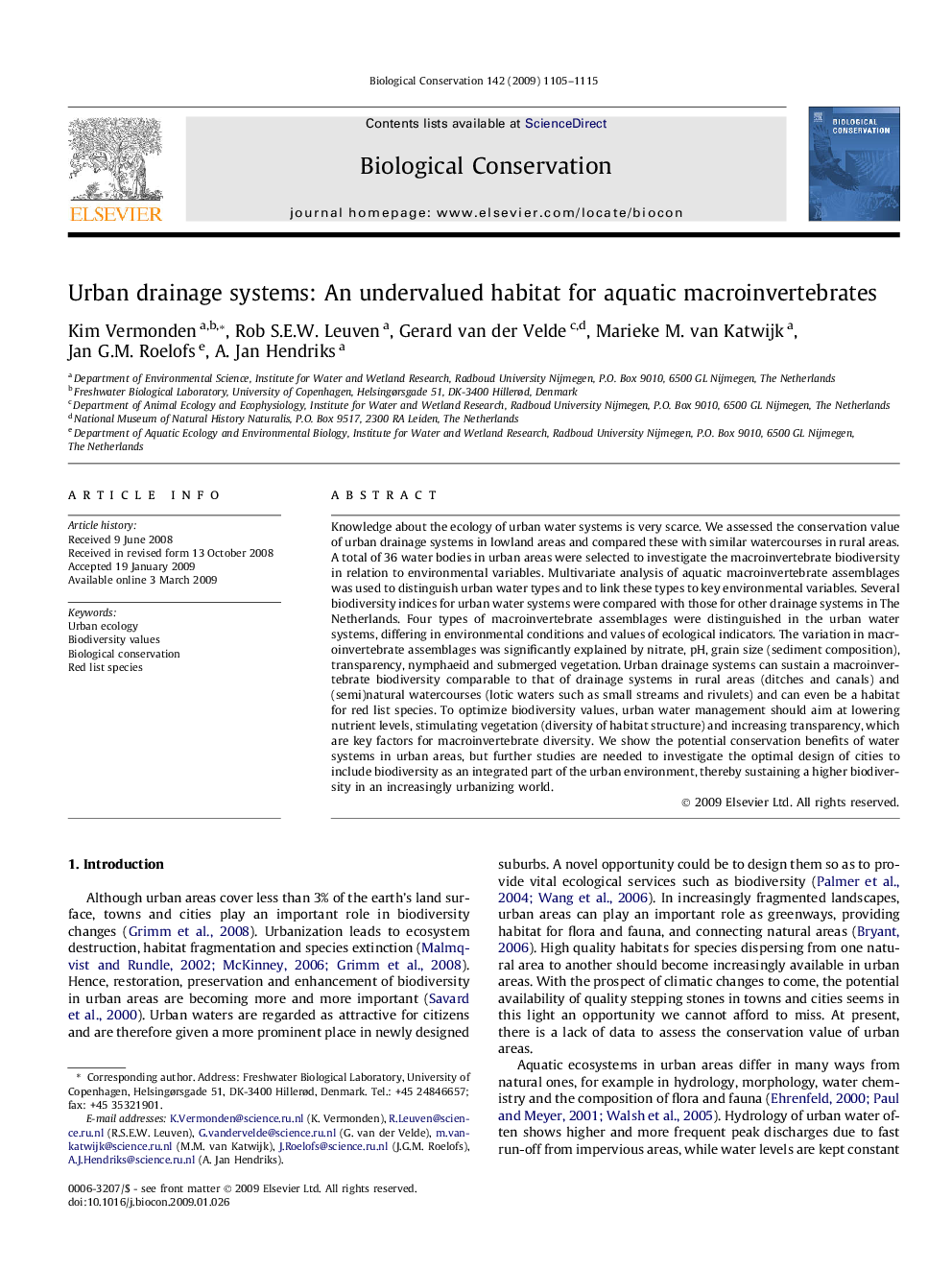| Article ID | Journal | Published Year | Pages | File Type |
|---|---|---|---|---|
| 4386298 | Biological Conservation | 2009 | 11 Pages |
Knowledge about the ecology of urban water systems is very scarce. We assessed the conservation value of urban drainage systems in lowland areas and compared these with similar watercourses in rural areas. A total of 36 water bodies in urban areas were selected to investigate the macroinvertebrate biodiversity in relation to environmental variables. Multivariate analysis of aquatic macroinvertebrate assemblages was used to distinguish urban water types and to link these types to key environmental variables. Several biodiversity indices for urban water systems were compared with those for other drainage systems in The Netherlands. Four types of macroinvertebrate assemblages were distinguished in the urban water systems, differing in environmental conditions and values of ecological indicators. The variation in macroinvertebrate assemblages was significantly explained by nitrate, pH, grain size (sediment composition), transparency, nymphaeid and submerged vegetation. Urban drainage systems can sustain a macroinvertebrate biodiversity comparable to that of drainage systems in rural areas (ditches and canals) and (semi)natural watercourses (lotic waters such as small streams and rivulets) and can even be a habitat for red list species. To optimize biodiversity values, urban water management should aim at lowering nutrient levels, stimulating vegetation (diversity of habitat structure) and increasing transparency, which are key factors for macroinvertebrate diversity. We show the potential conservation benefits of water systems in urban areas, but further studies are needed to investigate the optimal design of cities to include biodiversity as an integrated part of the urban environment, thereby sustaining a higher biodiversity in an increasingly urbanizing world.
